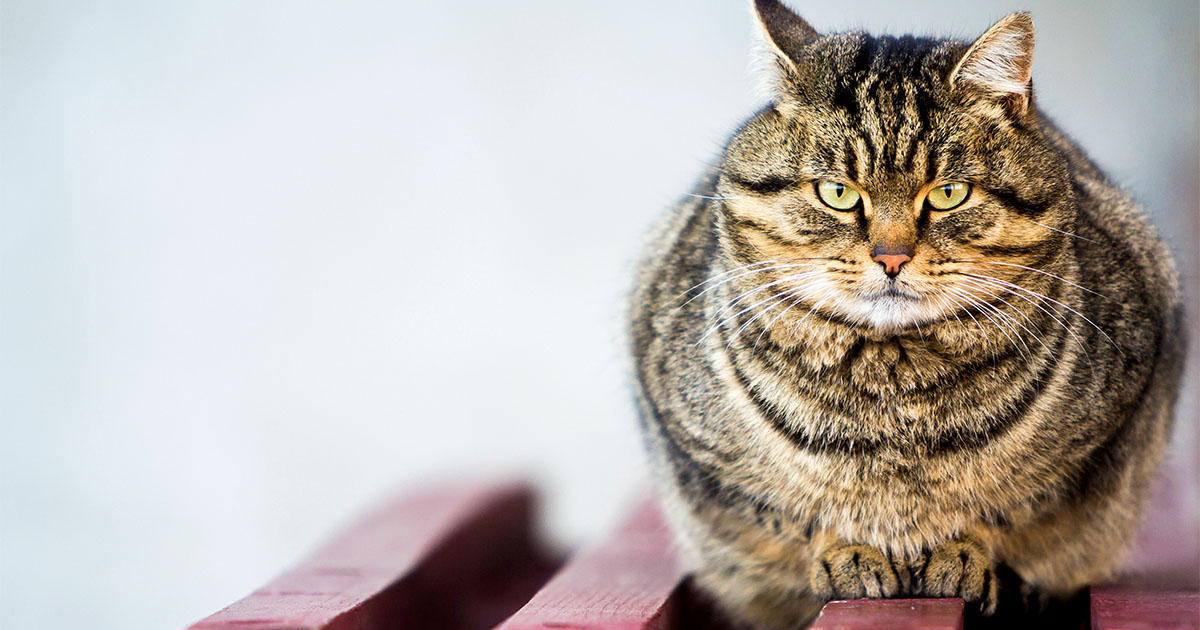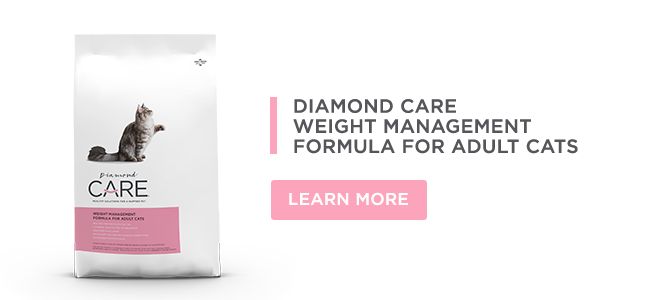The growing number of overweight and obese U.S. cats — estimated at nearly 59.5 percent or 50.5 million cats — is no secret. Neither is the resulting risk of serious health conditions that these fat cats face when excessive body fat interferes with how their bodies work.
While scientists and veterinary specialists don’t fully understand all of the connections between excess body fat and health issues, they are beginning to unlock the secret activities of adipose tissue, or body fat.
Secret “life” revealed
If there’s a silver lining to the current pet and human obesity epidemics, it would be the new knowledge gained about adipose tissue and its functions in cats (dogs and humans, too). Fat has long been known for:
- Storing energy
- Cushioning vital organs such as the heart and kidneys
- Insulating the body against heat loss
- Providing structural support to organs in the abdomen
Scientists’ view of adipose tissue as a passive, specialized storage area for excess energy changed in 1994 with the discovery of leptin, a protein hormone that’s secreted by fat cells (aka adipocytes). Since then, we’ve discovered that more than 100 substances (collectively called adipokines) are produced in adipose tissue, making fat the most abundant source of hormones and the largest endocrine organ in the body. Adipokines are essential to normal body functions and play important roles in:
- Energy balance
- Glucose (blood sugar) and lipid (fat) metabolism
- Inflammation and immune system function
- Blood clotting and blood vessel function
- Growth of new blood vessels
In addition, fat is now recognized as a more complex organ that contains several different types of cells, not just the fat-storing cells with which we’re familiar.
What’s currently known about fat-secreted hormones
Although the majority of what’s known about hormones produced by adipose tissue comes from people and rodents (mice and rats), two hormones have been studied in cats and dogs.
Leptin helps suppress appetite, decrease food intake and control energy use by signaling the brain’s feeding centers. It’s also involved with normal activities of the reproductive and immune systems, and modifies the body’s response to insulin (aka insulin sensitivity). The amount of leptin in a cat’s bloodstream is related to a cat’s body fat. In other words, overweight and obese cats have more leptin in their blood than normal-weight cats. Scientists have found that cats with insulin resistance, a condition that contributes to diabetes, have higher leptin blood levels than cats with normal insulin sensitivity. This finding supports a link between leptin, insulin sensitivity and glucose metabolism in cats.
RELATED POST: Fat Cats Face Serious Health Risks
Adiponectin was discovered after leptin and is produced only by mature fat cells. This hormone is closely connected to the body’s ability to use glucose by improving insulin sensitivity and increasing glucose uptake into cells. The amount of adiponectin in blood decreases with increasing body fat, suggesting the hormone plays a role in insulin resistance and type 2 diabetes, the form of diabetes most common in cats.
Numerous other factors have been identified as potentially having a role in feline obesity. However, more research is needed to understand their contributions and roles.
Obesity as a disease
In people, obesity is now considered to be a chronic inflammatory disease — it’s the inflammation that causes a wide range of health issues such as insulin resistance, heart diseases, arthritis and others. Given the similarities in obesity-caused insulin resistance of people and cats, veterinary experts believe excess body fat produces chronic inflammation in pets as well and provides the basis for defining obesity as a disease.
Obesity has become the most common nutritional disorder of cats in the United States and has been accompanied by an increase in feline diabetes during the past 10 years. As new research identifies the relationships between the substances produced by adipose tissue and various health conditions, the list of diseases associated with obesity will only grow. That makes prevention and management of our pets’ excess body weight essential to providing them with a long, healthful life.








